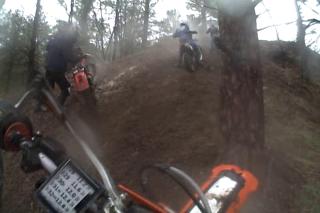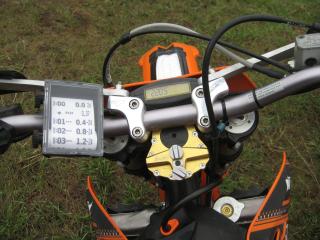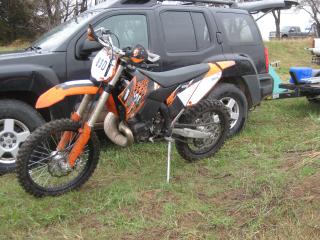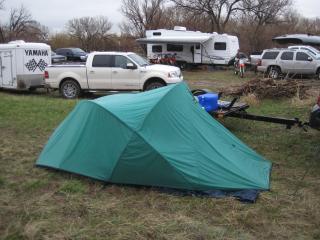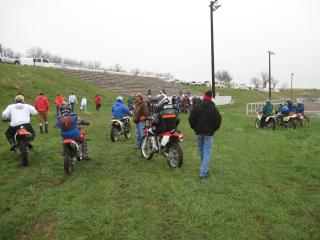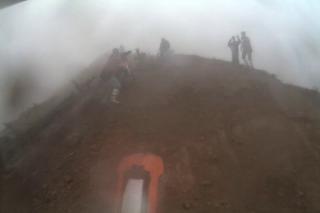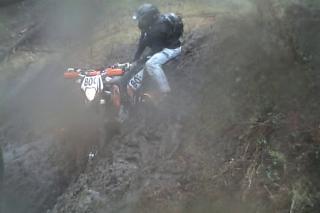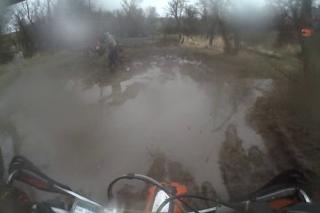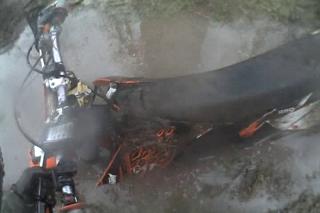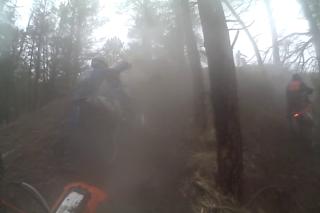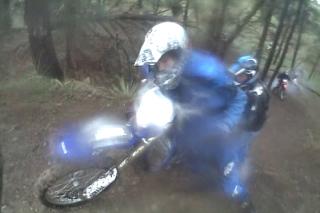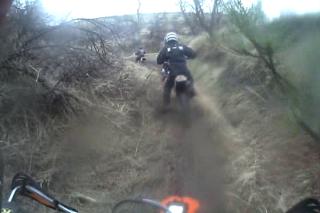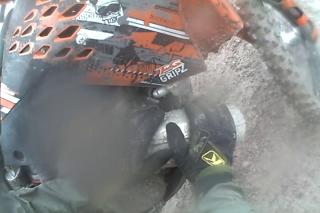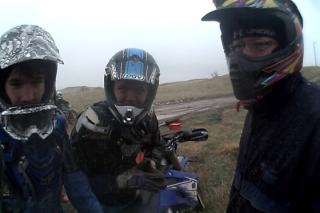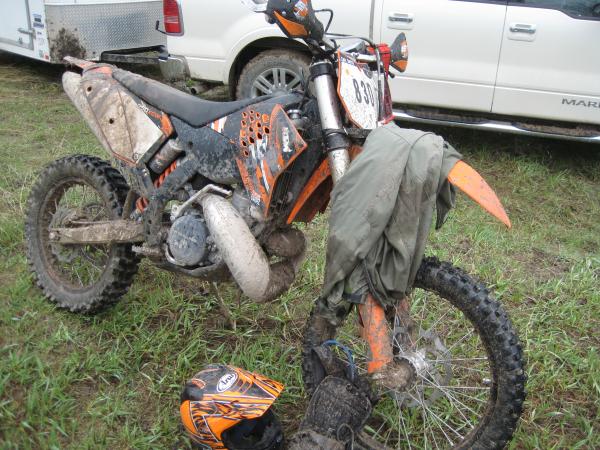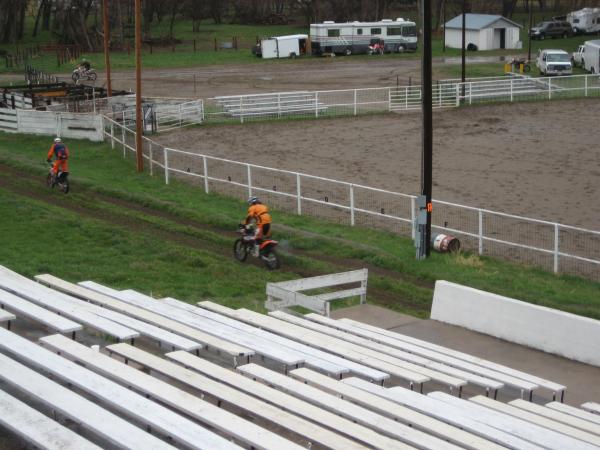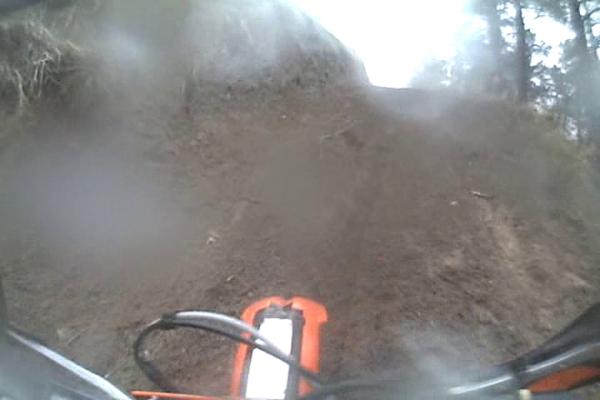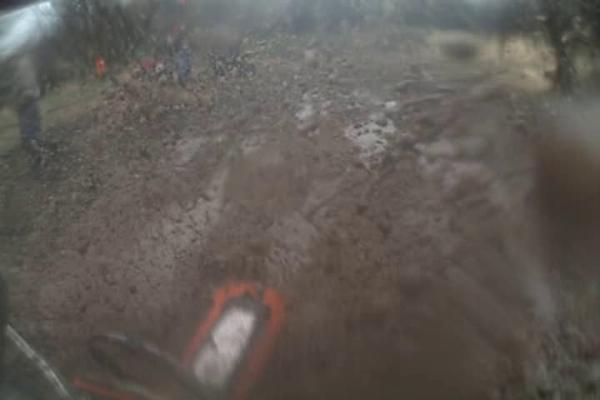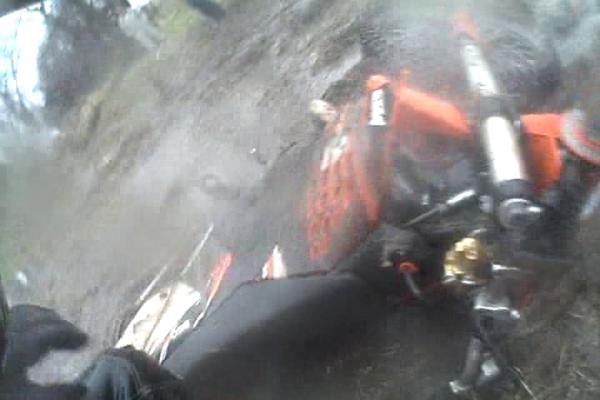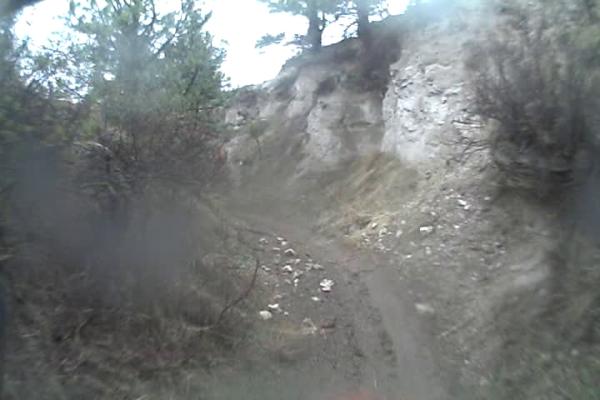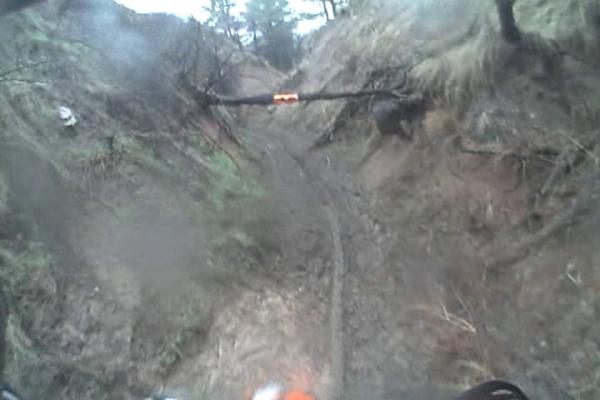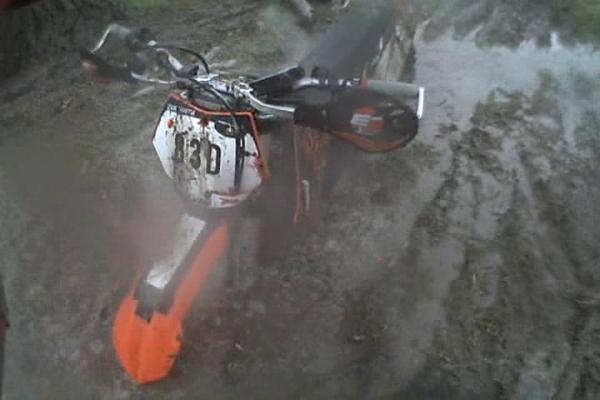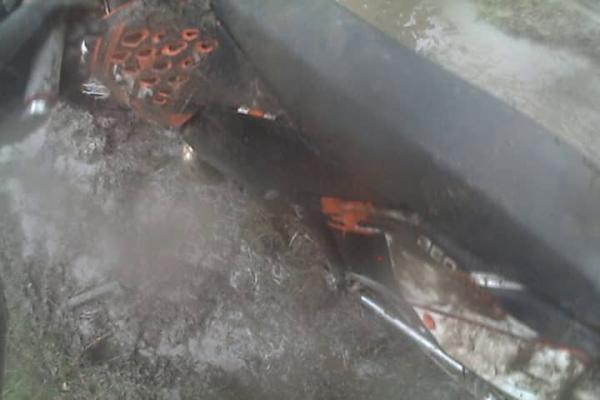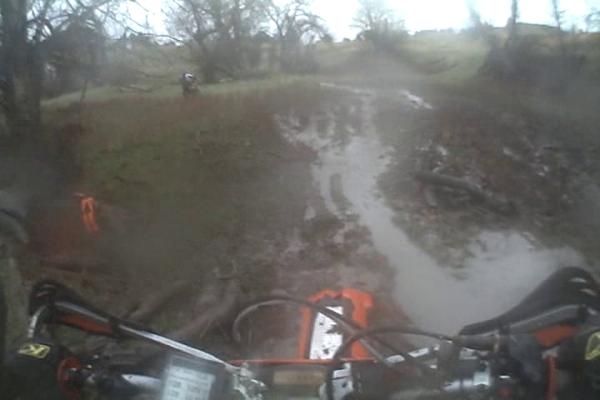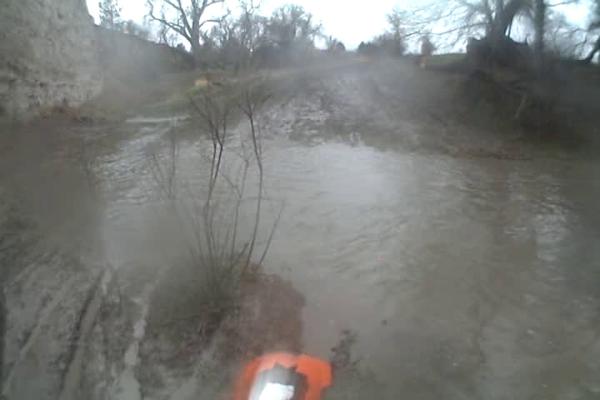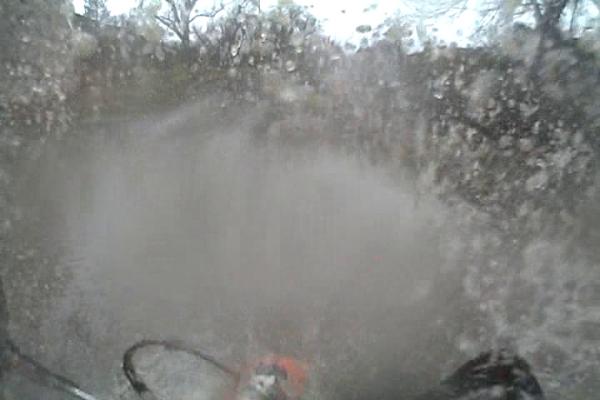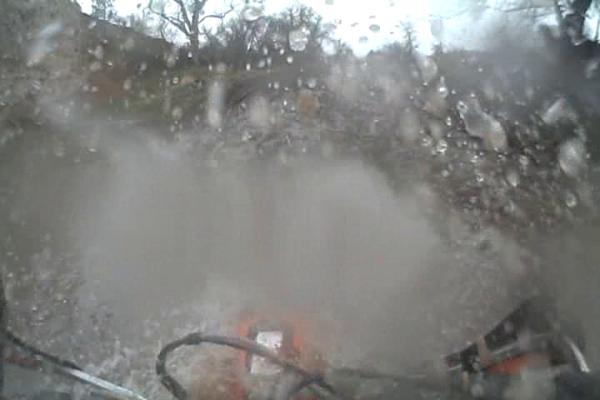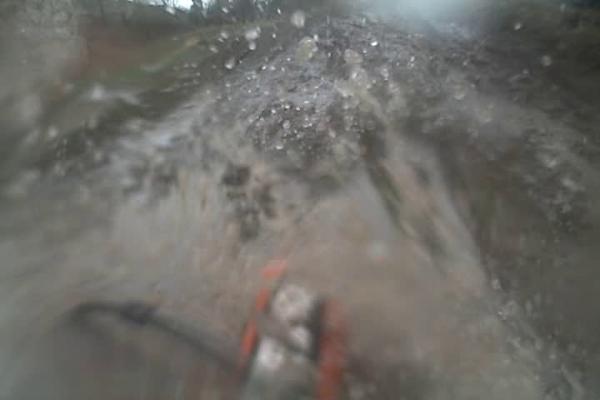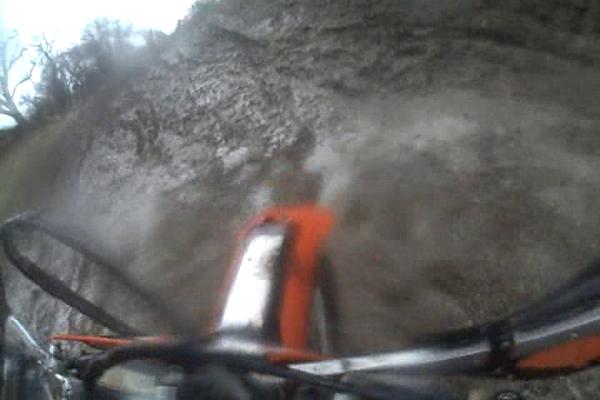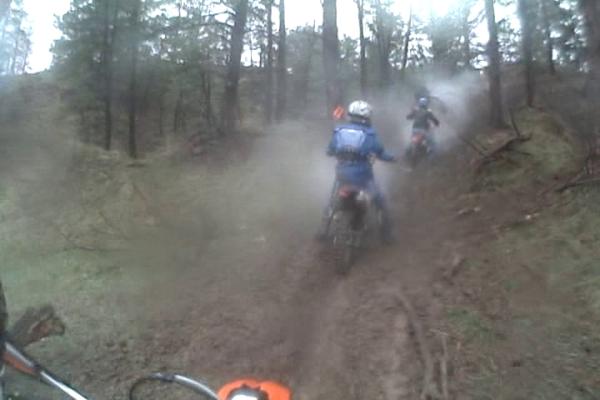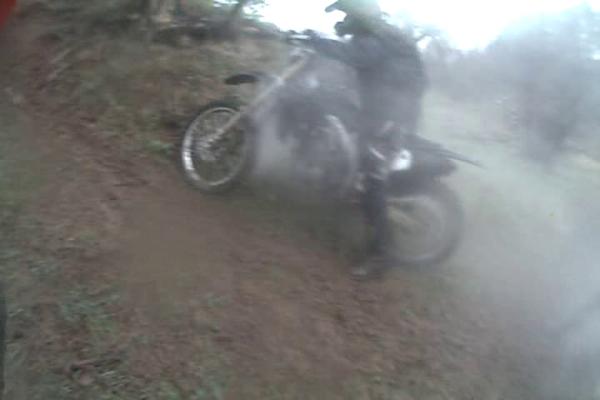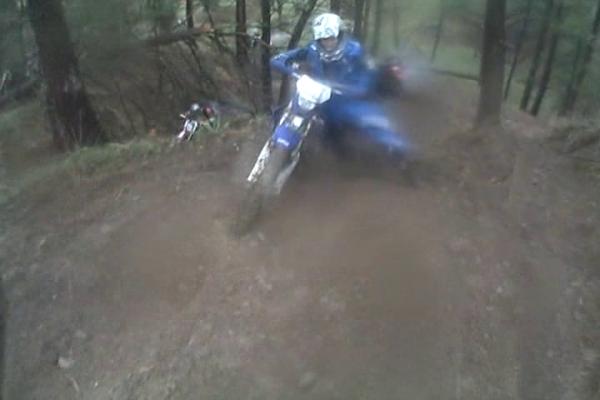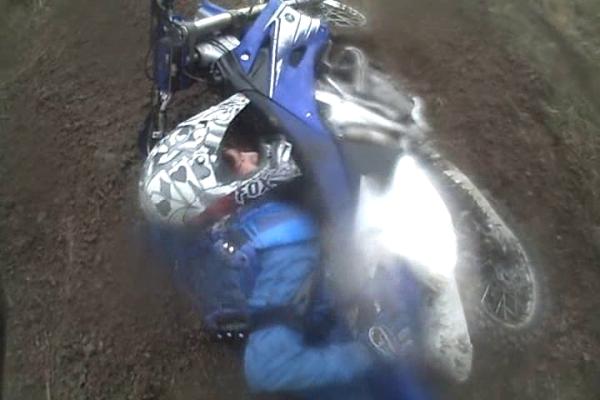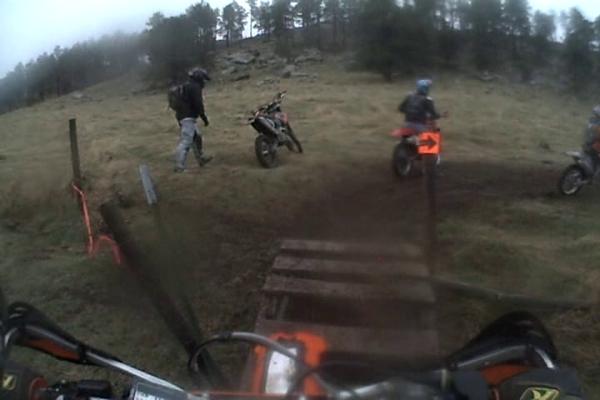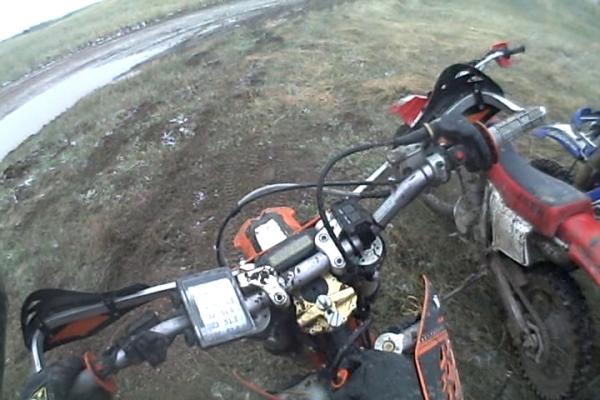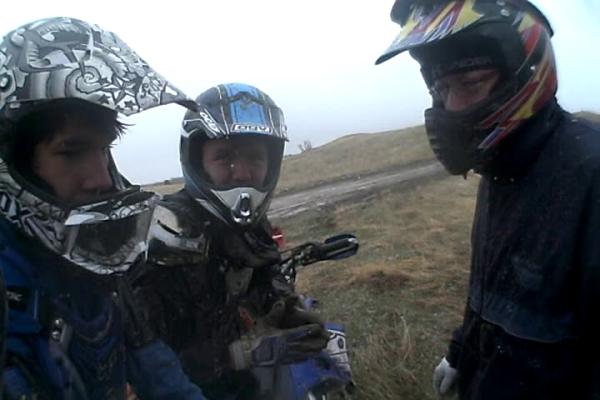Crawford, this year's race location, is just a short four-hour trip from Fort Collins. So I threw the bike on my trailer, loaded my Xterra up with race and camping gear, and headed out Saturday about 10 AM. The forecast for Crawford on Sunday was mid 40's, with a 50% chance of rain. With that in mind and remembering the frigid camping in Texas at the Caprock enduro last month, I brought my winter camping gear and extra long underwear. For the race, I figured a little light rain would be no problem and temperatures in the mid to high 40's would be blistering hot compared to the mid-30's starts we've had at the VDR Hare Scrambles (Berthoud, CO) earlier this year. Once in the trails and working hard, I figured I'd be fine with maybe a light jacket.
Two weeks prior to the race, the forecast was for approx 70-80 degrees and "nice". At a local altitude of 3500-4000', these conditions would have put the air/oxygen density almost exactly the same as a 60 degree day in Fort Collins, so I was planning to use the same jetting as I've worked up for use here. Over the period of a week of 50-70 degree weather, I had tweaked my jetting to 38 pilot, N8RJ-3, 3/4 air screw, and a 165 main. (That main might be a little rich, but it works OK.) The N8RJ has a slightly leaner straight taper than the N8RW, and this seems to give me more grunt off idle when using the 38 pilot. In the last few days before heading to Crawford, it became clear that the weather was going to be considerably colder. I headed to the race with my Fort Collins jetting, planning to make any small tweaks there. My first priority was a stable and reliable idle, and then good off-idle performance, with nothing really screwed up past there. At the site, I adjusted the air screw to approx 1/2 to get immediate off-idle zing with no bog. This is increasingly important with the Rekluse, and the combination of great low-end jetting with no lag or bog along with the Rekluse proved to be a lifesaver. At the race site, after some test rides and consulting the KTM jetting matrix, I raised the needle one clip (N8RJ #4) to enrichen the approx 1/4-1/2 throttle range. It took the bike a little longer to "warm up" and run good at this setting, but it seemed to pull better and have a less "tinny" sound. I didn't want to run too lean and overhead the engine.
The other big change was wearing contacts instead of glasses, under my goggles. In cold weather and high levels of exertion, especially when not moving - like dragging a bike up a hill - glasses under goggles and even just glasses alone fog up and become useless. In moist air, glasses without goggles covering them will accumulate a mist
that makes it impossible to see anyway. I am still on the "trial" contacts until my optometrist and I find the "just right" prescription, but the current set is good enough to race, ride, or wrench with. For the rest of my gear, I wore my regular stuff: Sidi Crossfire boots, Klim Dakar pants, Asterisk knee braces, Thor chest protector, Leatt Club neck brace, Klim gore-tex gloves, Arai helmet, and Scott 87 goggles. I wore a TAD Gear "soft shell" jacket over a long underwear top for the race.
As we turned off the road for the first test section, I mentally sighed relief. Visibility was 50-100 yards due to fog, but the trails had good traction and it was interesting territory. With rocks, some hills, and some fence crossings, things were interesting. Pretty soon we rolled up to an area where I saw a bunch of riders waiting around- what I couldn't see was the "first big hill" just ahead. After a few moments to appraise the situation, the guys on my minute and I hit the hill. It was pretty steep and rocky with a ridable area a few yards side. To both sides the ground fell down at a steep angle; you wouldn't want to fall down that. I hit the hill in 2nd with the Rekluse and made it most of the way, blasting close past a few riders who were already stopped, and finally getting stopped by lost momentum and
a rider in my path. With the Rekluse, it was easy to push the bike up a little bit, but then I figured, heck, why don't I just sit on the bike and motor up? I did and it worked. I made it up the rest of the way. I cleaned my goggles for a few minutes while waiting for the guys on my row, but finally just took off. I think there was a check just a little ways after this hill, which was also the opportunity for riders to bail if they'd had enough. I was in, so I motored off.Soon, the trail entered a ditch, went around the corner, and I was confronted with the first water, mud bog, and muddy hill. As I pulled up, there were two or three riders stuck up to their axles or higher, and several more sort-of milling around. This where taking a moment paid off: first, I watched someone else cross the water successfully, then I eyed what I thought would be a good line up the hill. Since there was carnage on the hill blocking my path anyway, I helped the first guy stuck up to the top of his wheels in mud (it was a KTM 4-stroke, I think number 80C). Once the guy stuck on the hill cleared out, I gassed it and tried to hit the bush to the left
of the big rut. I think I made it up a little further than the deepest spot in the deep rut, but fell over anyway. With the Rekluse, the bike didn't stall. I was able to pick it up and simply just motor up the hill. Woohoo! That looked a lot harder than it actually was.After this, the trail alternated between grassy portions with pretty good traction, some tight trees, and then the water crossings. The first area with more water was a big bog. I picked my way through the preamble area and spotted a guy revving and totally stuck. Well, I knew I didn't want to go the same way he did. One of the course workers gestured which was a good way, and I hit it. I made it through but fell over on the far side. I got wet, but made it across, picked up the bike, and kept going. There was some more water to pick through, and then there was another stream crossing. A guy with his helmet off was giving directions: "see that big bush, go through the rut on its right and then hammer it through to the other side." I watched one guy go ahead of me and then did it! I stayed easy on the gas in the rut, and when I started to clear the rut I gassed it, plowed the water, and made it across and up the other side. Woohoo!
Not too long after this, I came across another swampy area. Hey, no problem, this is nothing compared to the last one. I see a path where it looks like a lot of bikes have gone, and back up to get some speed at the water crossing. I hit it, my front end sinks in, and I go tumbling over the bars. I look back and my bike is in water and mud over the front wheel, and I hear the engine cut out. DAMN! Now not only do I have to waste a bunch of energy lifting the bike out of the hole, but it might not start again. Using all my strength and mass, I managed to pull the front end out, then drag the back end up, and pull it out of the hole. I get it upright, get situated, hit the starter button-- Voila! I love the electric start, and the 2-stroke starts easily. The bike runs great the rest of the race, with no ill effects.
Just after this, there was a small but killer hill. The rest of the guys on my minute caught up and I ended up last going up this little hill. It would have been passable with momentum, but everyone was backed up. The Rekluse did help and I made it most of the way up until traffic got congested. To conserve energy, I tried to never fall over, and I was able to hop off and just milk the throttle to get up. If my rear tire got stuck, instead of rocking and revving, I just would pick up the rear and move is six inches to
one side to get off the rock or root or whatever, and keep motoring it up. Once at the top, I went back and helped to drag minute 83's Yamaha up to the top.From here on, it opened up a bit and we had flowing trails for a while. Then it turned to roads. We had what seemed like miles and miles of baby poo mud roads, which felt a lot more treacherous than any of the trail riding so far. It was cold, very cold. Somewhere in here it started to rain. Then it turned to freezing rain. My goggles were useless. At a turn, there was a minivan with a woman who was wiping off goggles; that was a god send. I didn't recognize him immediately, but Elite KTM's Dan States was there (everyone looks different with a helmet on). The lady said to go down the road 7 miles to gas #1. I continued - ok, to be fair, I hammered it down the road - I was freezing my ass off. My hands were mostly numb. A ways down the road, I saw flagging down off the road to the left, and I wondered if that was
the trail? So I headed back to the corner to ask, and it turned out I just had to go on the road for 7 miles and the gas would be there. I wasn't the only person wondering if the road was correct, because I saw another rider sort-of tentatively looking for flagging while cruising on the road.
I managed to locate my gas can and fuel up (I put in about 1.5-2 gallons), and then found the rest of the guys on my minute. They had gotten ahead during my numerous stops to attempt to clear up my goggles. Pretty soon we figured out that we had like a half hour to wait! AAHHH!! It was so cold. The freezing rain had changed to snow, and snow was dusted on the side of the road. There was nothing at the gas
stop to provide warmth other than the header pipes and exhaust of the bikes that were idling. I tried to shake my arms and jump around to get some blood flowing.
We decided to leave a few minute early compared to the roll-chart time. We were greeted with miles and miles of slow chugging along on the super-slick muddy roads. After what seemed like 10 or 12 miles later, we went off-road for the last "test" section. By this point, I had totally ditched the goggles. I had to be able to see to navigate, especially with off-road obstacles. Although the sting from freezing air and rain was hard on my eyes and the additional tears caused my vision to degrade (contacts probably rotated due to water and my extreme squinting), it was better than mud-covered goggles. The off-road section was a blast, with a mix of the "moor" style terrain, some steel hilly technical sections (which reminded me a lot of our trails here in Colorado), some nice grassy sections where I could open it up a bit, and, yes, more water crossings! We actually came back some of the trails we had headed out on. The guys on my minute and I rode together for much of this section, picking the best route to bypass the worst mud and other "traps". After the last of
the water crossings, the trail turned into some tight turns in the woods, and I picked up the pace a bit. I kept going at a good clip as this lowland wooded trail transitioned to the steeper technical sections. The Rekluse totally shined here. Give it gas when I want some impulse, let off and don't worry about the clutch. This made the tight and technical sections more fun and I was faster on them. I passed a few riders in this section, which ended in the final check.At this point, all that was left was the transit back to town, on guess what, those great baby-poo mud roads. This was torture, but I tried to pick the best lines and wick it up a bit. A rider in a black rain jacket and I traded places and lines going back to town. Back at the HQ, they were really efficient at taking score sheets and there was no line. I headed back to my campsite and started to get my totally mud drenched clothes off. I was wet to the skin everywhere. I actually had to towel off before putting warm and dry clothes on. It was a mess.
Contents- 2:00 first big hill; 6:37 mud bog hill; 8:17 swamp; 9:57 KTM falls in hole; 11:42 big stream; 12:28 short hard hill
My gear worked pretty well, with two exceptions: 1. goggles simply cannot stay clean, 2. I should have worn warmer clothes and clothes that would keep me warmer once I inevitably got drenched. My bike was excellent. The 250 with the Rekluse could not have worked better. My jetting was fine. Even after the front wheel was buried under water, the bike started right up with the e-start and worked flawlessly. I had the PV spring turned 2.5 turns in from flush and this worked fine. The mud was so slippery, I wondered from time to time if the clutch was slipping- it was just the rear wheel spinning.
5/8/2009 Update: the results are posted - I managed to come in 4th in Vet-C. Not bad for my second enduro, first timekeeper. I might have made 3rd if I had stopped trying to maintain my goggles earlier.
The guys on minute 83, for good times and camaraderie
Elite KTM, for good advice and getting my bike set up on time

